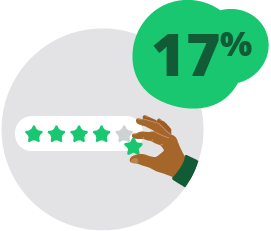Transform Complacency into Contentment: Top Tips for Engaging Your People

Aug 23, 2024 | 5 min read
As an organization, your people are your most valuable asset. Everyone brings insight, experience, and expertise to their roles that elevate your business, and it is important that your investment in your people reflects their value to prevent complacency.
There have been reports of increased levels of complacency and disengagement in organizations today. Following the “boreout” trend, which explored high levels of boredom and burnout, complacency can be just as detrimental to the success of your business and the wellbeing of your people.
Defined as feeling so satisfied with your own abilities or situation that you feel you do not need to try any harder, complacency can be a result of disengagement and is a sign that an organization needs to double down on efforts to engage their workforce and invest in their growth.
While complacency can mean trouble, there is a more positive reason that people in your organization are not angling for the next promotion: contentment. Contentment is a positive state of satisfaction and peace with one’s current situation, balanced with an openness to growth and change. That openness to growth and change is a key element of turning complacency into contentment, and our research gave valuable insight into how to shift the thinking and re-engage your workforce.
Wiley Workplace Intelligence sought to understand more about levels of both contentment and complacency in organizations today. We surveyed 2,220 people on how engaged they are in their organizations, how motivated they are to climb the ladder, and what keeps them invested in the success of both their careers and their organizations as a whole.
The Fine Line Between Complacency and Contentment
We found that there is a fine line between complacency and contentment. As in life, there are ebbs and flows to the levels of engagement in one’s job. There are times when people are more invested in their careers than their personal lives, and vice versa.
Not all employees are striving to always climb the corporate ladder, and that is okay. Not everyone seeks to be a manager of people but can provide exceptional value to an organization. The key differences between complacency and contentment are the levels of engagement one has with their position and organization. For example, someone who is content in their position will participate in upskilling opportunities to gain more expertise, take advantage of work/life balance by fueling their personal lives in their time away from work, but being fully engaged while they are present at work.
What Does Professional Success Look Like?
Professional success looks different now in 2024 than it did in the past. People are largely seeking more balance and fulfilment from their work. Things like job satisfaction, culture, and the quality of their teams play a larger role than simply rising through the ranks. Our research found that over half (62%) said they do not feel pressure to climb the corporate ladder, which could mean they are finding meaning in other ways.
Most of our respondents shared that contributing to organizational success is the top ranked marker of professional success, followed by achieving good work/life balance and having personal satisfaction with their jobs. Advancement to leadership positions was low on the list with only 13% of respondents ranking that as their vision of professional success.
What Professional Success Looks Like

Contributing to organizational success

Work/life balance

Personal satisfaction with job
Promote Internal Growth for Increased Contentment
While not everyone feels the pressure to climb the corporate ladder, there were a high number (65%) of respondents who shared that they are planning to pursue leadership opportunities within their organization. This is a great sign that organizations are creating cultures where people want to stay and grow.

65% want to pursue leadership within their organization.
Encouraging internal career progression can promote contentment by reducing employee turnover, as individuals are more likely to stay when they see opportunities for growth. It also boosts motivation and engagement, leading to increased productivity. Promoting from within allows the organization to retain top talent which can be more cost-effective than hiring and training new people.
Also, when you retain long-term employees, they become valuable sources of institutional knowledge, which is crucial for maintaining stability. Providing career growth opportunities can prevent complacency by showing employees they are valued for their contributions.
Interestingly, of those 65% of people who said they wanted to pursue leadership positions in their organizations, ability to coach and mentor direct reports leads their reasoning, immediately followed by increased challenges and compensation.
Red Flags Signal Complacency
While many of our respondents who said they did not want to pursue leadership roles had reasons that pointed more towards contentment rather than complacency (such as enjoying their current work, work/life balance, and prioritizing other aspects of life), there were some red flags that could be signs of growing complacency in your organization.
Increased stress, workload, and concerns about office politics topped the list of concerns preventing advancement. These fears can be very natural when considering taking on a new role, but it is up to organizations to create cultures that support their leaders and ensure that those who do not pursue career progression are doing so out of contentment not complacency.
Red Flags Preventing Internal Advancement

Increased Stress

Increased Workload

Office Politics
While enjoying current work, work/life balance, and prioritizing other areas of life are totally valid reasons for wanting to set the cruise control in a current position, concerns about stress, workload, and office politics can be red flags for complacency and signs that your organization could use a culture boost.
How to Turn Complacency into Contentment
Our respondents shared valuable insight into the reasons they would consider internal career advancement, even if they are content in their current roles, and these are the top five considerations for investing in their current organization.
- Promote Work/Life Balance: Promote flexibility and communication.
- Foster Trust: Get to know each other on a deeper level.
- Nurture a Positive Organizational Culture: Understand that everyone is different and get to know yourself and others better.
- Mentorship From Current Leaders: Make time for informational interviews or a mentorship program.
- Commitment to Purpose: Communicate clearly about how each person’s contributions impact organizational goals.
Leverage these skills can start turning complacency into contentment in your organization. By actively engaging in self-improvement, recognizing accomplishments, and creating opportunities for growth, complacency can be transformed into genuine contentment.
Wiley’s suite of professional solutions provides a structure and common language to help empower entire organizations with the skills needed to get to the next level. From building better teams with The Five Behaviors®, and improving understanding to create engaged, collaborative, and adaptive cultures with Everything DiSC® on Catalyst, helping you make confident hiring decisions with PXT Select®, or unlocking the power of leadership at every level with The Leadership Challenge®, Wiley has innovative solutions that help make the workplace a better place.
